Every machine, big or small, needs regular care.
Forklifts are no exception and perform regular maintenance too.
In fact, their hefty job in warehouses, construction sites, and other areas makes regular forklift maintenance scheduleeven more essential.
Proper forklift maintenance ensures that the vehicle runs smoothly, lasts longer, and, most importantly, remains safe for the operator and those around it.
Benefits of Regular Maintenance:
- Safety: A well-maintained forklift reduces the risk of accidents. Small issues can turn into major problems if left unchecked, endangering the operator and others.
- Efficiency: Forklifts that are regularly serviced and checked run better. This ensures that tasks are done quickly and efficiently, saving time and money.
- Lifespan: Just like with any vehicle, regular care can extend the life of a forklift. This means fewer expenses on forklift repairs and replacements in the long run.
We service Houston, TX and surrounding areas.
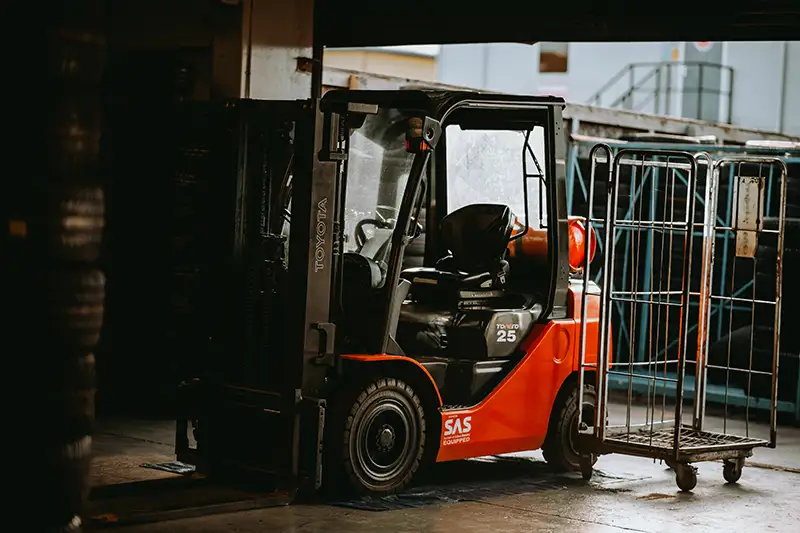
Understanding Forklift Types and Their Maintenance Needs
Not all forklifts are the same. Depending on the type of electric forklift used, maintenance needs might differ. It’s important to understand these differences to provide the best care.
1. Electric Forklifts
- Power Source: Uses batteries.
- Maintenance Needs:
- Battery Care: Regular checks for corrosion, ensuring proper water levels, and securing connections. Batteries should be charged and changed following manufacturer guidelines.
- Electrical Systems: Wires, connections, and electrical parts need to be inspected for wear and tear.
- Lubrication: Even though they’re quieter and produce no emissions, electric forklifts still have moving parts that need lubrication.
2. Internal Combustion Forklifts
- Types: Diesel, gasoline, and propane.
- Maintenance Needs:
- Fuel System: Regularly check fuel lines, tanks, and filters. Use the right fuel type and ensure there’s no contamination.
- Emissions: Regularly inspect and clean the exhaust system. Some areas have regulations on emissions, so it’s important to be compliant.
- Engine Care: Regular oil changes, checking the cooling system, and maintaining the air filters are essential for these forklifts.
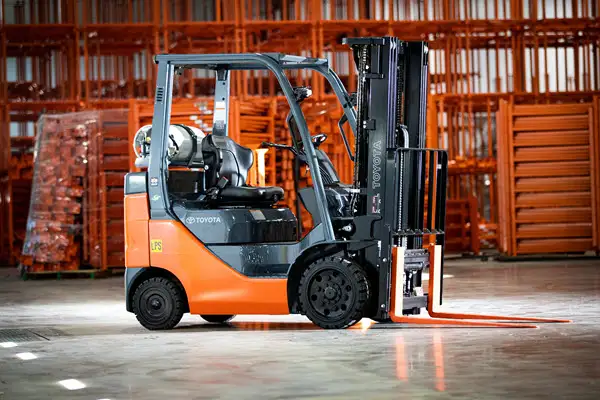
Differences in Maintenance:
- Battery vs. Fuel: Electric forklifts require more attention to their batteries, while IC forklifts require attention to their fuel systems.
- Emissions: Electric forklifts produce no emissions, while IC forklifts do. It’s vital to check the exhaust system in IC forklifts.
- Noise Levels: Electric forklifts are generally quieter, but it doesn’t mean they don’t have parts that need attention. Noise can be an indicator of problems in IC forklifts.
Proper maintenance isn’t just a choice; it’s a necessity. Whether you’re dealing with electric or internal combustion forklifts, understanding their specific needs and performing maintenance yourselfis the key to ensuring they run efficiently and safely.
Daily Inspections and Their Importance
Prevention is Better Than a Cure
Imagine driving your car without ever checking the oil, tires, or brakes. Sounds risky, right? The same goes for forklifts. A quick, once or daily forklift part inspection or forklift partinspection can prevent small problems from becoming big, expensive issues. And more importantly, it ensures the safety of the operator and everyone around.
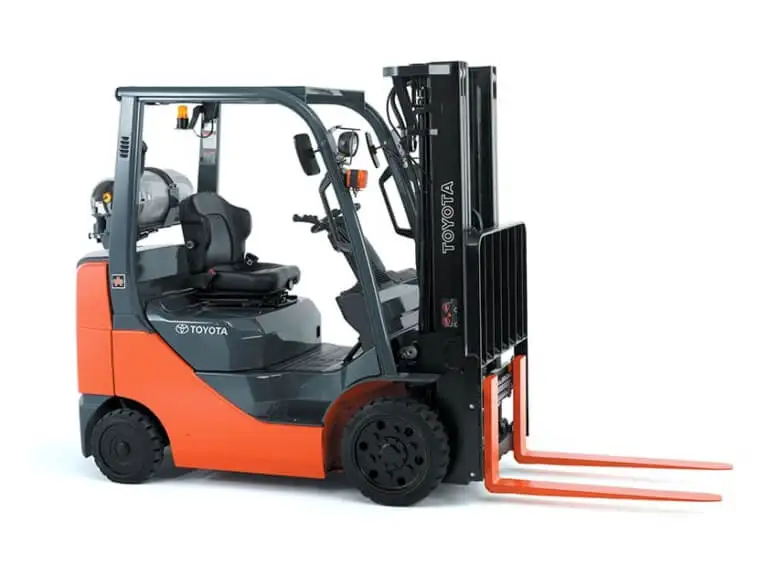
Why Daily Checks are Essential
- Early Problem Detection: Small issues, when spotted early, are easier and cheaper to fix.
- Safety Assurance: Daily checks ensure that the forklift is in good operating condition, minimizing the risk of accidents.
- Consistent Performance: Ensuring all parts are functioning correctly means the forklift will operate at its best.
- Compliance: In many areas, daily inspections are not just a good practice, but a legal requirement.
Key Inspection Areas for Daily Checks
1. Tires and Wheels
- Visual Check: Look for wear, cuts, or gouges. Tires with too much wear can affect stability.
- Pressure: Ensure tires are inflated to the recommended pressure. Over or under-inflation can be dangerous and affect performance.
- Stability: Check for loose bolts or other issues that could affect the stability of the forklift.
2. Forks and Mast Operation
- Visual Inspection: Check for cracks, distortions, or excessive wear.
- Operational Check: Ensure smooth movement without any hitches when lifting or lowering. Check for any unusual noises.
- Alignment: Ensure forks are straight and level.
3. Safety Features: Lights, Horns, and Alarms
- Lights: Ensure all headlights, brake lights, and warning lights are functional.
- Horn: Test the horn to make sure it’s loud and clear.
- Backup Alarm: Ensure the reverse alarm sounds when the forklift is backing up.
4. Fluid Levels
- Oil: Check the engine oil level using the dipstick.
- Coolant: Ensure the coolant is at the recommended level.
- Fuel: For IC forklifts, check the fuel level. For electric ones, ensure the battery is charged.
- Hydraulic Fluid: Check for leaks and ensure the fluid is at the proper level.
5. Battery and Connections (For Electric Forklifts)
- Visual Inspection: Look for corrosion or damage to the battery and its connections.
- Charge Level: Ensure the battery is sufficiently charged before operation.
- Cleanliness: Make sure the battery is clean, as dirt can cause it to discharge faster.
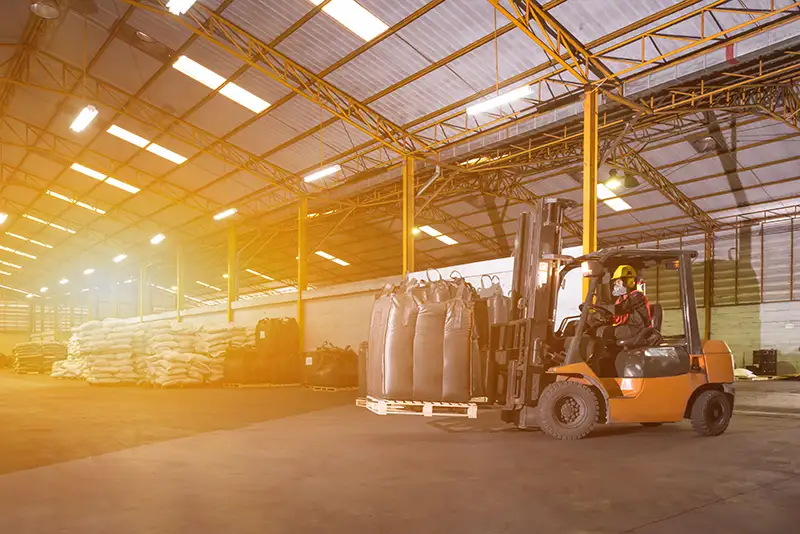
Make Sure Daily Inspections a Habit
It might seem like daily inspection isa lot to remember, but once daily inspections become a habit, they won’t take more than a few minutes. Having a standardized maintenance checklistcan help ensure frequent inspections sono key areas are overlooked. Moreover, it’s always a good idea to keep records of daily inspections. This not only ensures regular checks but also helps track potential recurring issues.
Long-Term Maintenance Procedures
The Importance of Scheduled, Long-Term Maintenance
While conducting daily inspections expensive repairs canensure the short-term functionality and safety of your forklift, long-term maintenance procedures guarantee its durability, efficiency, and longevity over the years. Think of it as a regular health check-up for your machine, ensuring it stays in optimal condition.
Long-Term Maintenance: Why It Matters
- Consistent Performance: Regular checks and updates mean the forklift runs at peak performance.
- Cost Savings: Preventive maintenance can save costs related to major breakdowns and replacements.
- Increased Lifespan: Taking care of your machine ensures it serves you well for years.
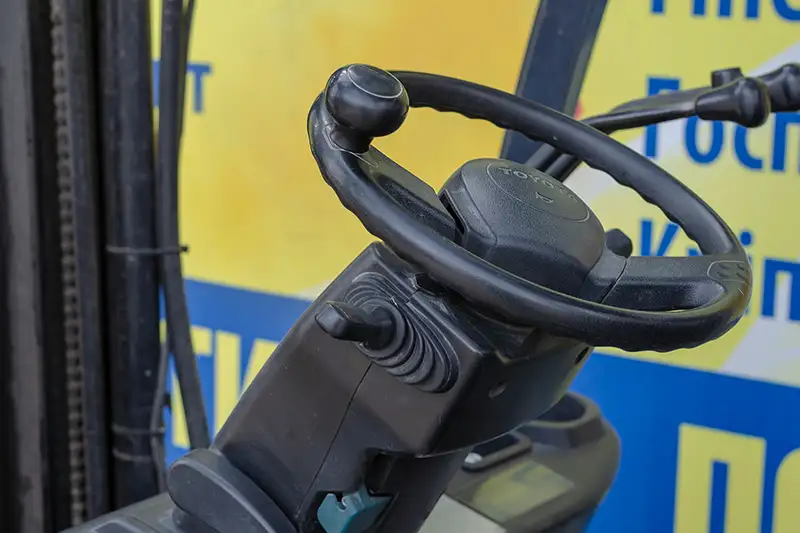
Essential Long-Term Maintenance Procedures
1. Change Engine Oil and Filters
- Frequency: Typically every 250 hours of operation, but refer to the manufacturer’s recommendations.
- Procedure:
- Drain old oil.
- Replace the oil filter.
- Refill with fresh oil suited to the forklift’s engine type.
2. Check and Replace Air Filters
- Frequency: Inspect every 100 hours and replace as needed.
- Importance: Clean air filters ensure optimal combustion and prevent harmful debris from entering the engine.
- Procedure:
- Remove and inspect the air filter.
- Clean or replace depending on its condition.
3. Inspect and Adjust Brakes
- Frequency: Every 200 hours or if braking feels less responsive.
- Importance: Properly functioning brakes are essential for safety.
- Procedure:
- Check brake fluid levels.
- Examine brake pads and drums for wear.
- Adjust or replace components as needed.
4. Lubricate Moving Parts
- Frequency: Every 50-100 hours, depending on usage.
- Importance: Lubrication prevents friction, wear, and tear.
- Procedure:
- Identify all moving parts such as chains, mast, and axles.
- Apply appropriate lubricant, ensuring not to over-lubricate.
5. Check and Maintain Fluid Systems
- Frequency: Every 100 hours.
- Importance: Fluids help in cooling, lubrication, and hydraulic functions.
- Procedure:
- Check levels of hydraulic fluid, coolant, and transmission fluid.
- Look for leaks or signs of contamination.
- Replace or top-up as needed.
6. Battery Care and Maintenance (For Electric Forklifts)
- Frequency: Weekly or monthly checks, depending on usage.
- Importance: A healthy battery ensures efficient operations.
- Procedure:
- Clean the battery and terminals.
- Check electrolyte levels and top up with distilled water if needed.
- Ensure the battery is charged but not overcharged.
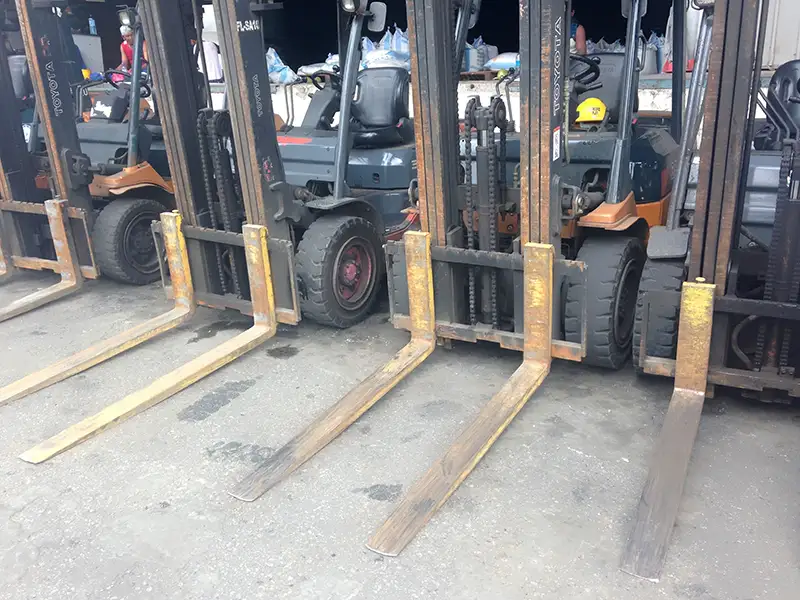
Creating a Maintenance Schedule
Setting a routine maintenance schedule is beneficial.
Here are some steps to create one:
- Consult the Manufacturer’s Manual: This will have specific recommendations for your forklift model.
- Log Hours of Operation: This helps determine when maintenance is due.
- Use Reminders: Set reminders on calendars or maintenance software to ensure you don’t miss out on any checks.
- Maintain Records: Keeping detailed records can help identify recurring issues and track the overall health of the forklift.
Long-term maintenance might seem daunting, but with a structured approach and sufficient maintenance, it becomes manageable and straightforward. Always remember, the time and effort invested in preventive and preventative maintenancewill always be less than the cost and hassle of dealing with major breakdowns.
Forklift Tire Maintenance
Rolling to Safety and Efficiency: The Importance of Forklift Tire Maintenance
When people think about forklift maintenance, they often focus on the engine, battery, electrical system, or hydraulics of lift truck. However, the tires play an equally crucial role less maintenance. They’re the only part of the forklift that touches the ground, making their condition vital for safety, stability, and efficiency.
Why Proper Tire Care Matters
- Safety: Worn or damaged tires can lead to accidents, tip-overs, or loss of load.
- Performance: Good tires ensure smooth operation, reducing stress on the forklift and the operator.
- Economy: Properly maintained tires last longer, reducing the frequency of replacements and downtime.
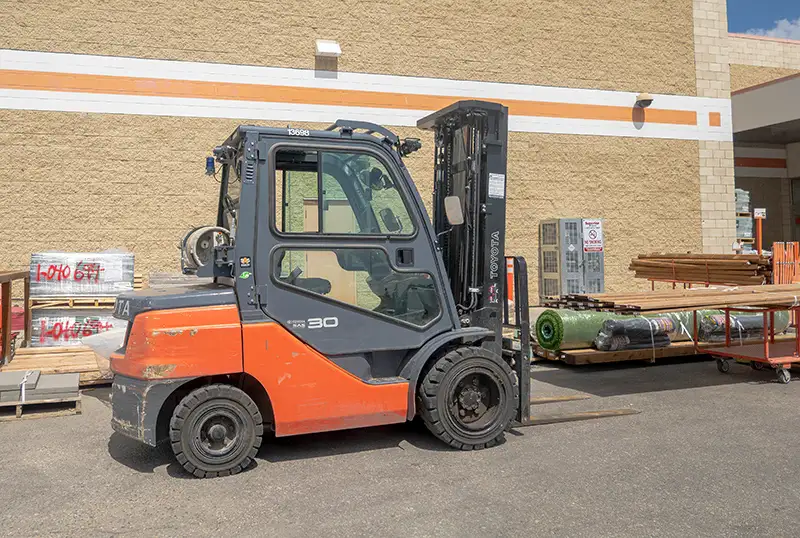
Understanding Different Types of Forklift Tires
Before diving into maintenance, it’s essential to understand the various types of forklift tires:
- Cushion Tires:
- Made of solid rubber.
- Best suited for indoor operations or smooth surfaces.
- Generally cheaper and have a smaller turning radius.
- Pneumatic Tires:
- Similar to car or truck tires, filled with air.
- Suitable for rugged terrains, such as construction sites.
- Offers better traction and load-carrying capacity.
- Solid (or Non-Pneumatic) Tires:
- Made of solid rubber, eliminating the risk of punctures.
- Ideal for environments with sharp objects, like lumberyards.
- Provides a middle ground between cushion and pneumatic tires in terms of performance.
Key Aspects of Tire Maintenance
1. Visual Inspection
- Frequency: Before each shift or daily.
- What to Look For:
- Cuts, cracks, or chunks missing.
- Flat spots or uneven wear.
- Tread depth – if the tread is worn down, traction is reduced.
2. Proper Inflation (For Pneumatic Tires)
- Frequency: Weekly or based on usage.
- Importance: Under-inflation can lead to reduced load capacity and tire damage, while over-inflation can make tires prone to punctures.
- Procedure:
- Use a pressure gauge to check the tire pressure.
- Inflate to the manufacturer’s recommended level.
3. Rotation and Alignment
- Frequency: Every 250 hours of operation or if uneven wear is noticed.
- Importance: Ensures even tire wear and extends the tire’s life.
- Procedure:
- Rotate tires from front to back or side to side, depending on wear patterns.
- Ensure forklift alignment is proper to prevent uneven wear.
4. Tire Replacement
- When to Replace:
- If there are visible damages like deep cuts or cracks.
- If tread depth is worn out beyond the recommended level.
- Procedure:
- Always replace tires in pairs to maintain balance.
- Ensure replacements are of the recommended size and type.
Additional Tips for Forklift Tire Care
- Cleanliness: Regularly clean tires to remove debris, which can cause wear or damage.
- Operational Practices: Train operators to avoid fast starts, stops, or turns, which can cause excessive tire wear.
- Surface Checks: Ensure that the forklift operates on surfaces free from sharp objects, chemicals, or other hazards that might damage the tires.
Tires are the foundation of your forklift’s operation. By giving them the attention they deserve, you not only ensure a smoother and safer ride but also save money in the long run. As with all maintenance, consistency is key. Regular checks and timely interventions can prevent bigger, costlier issues down the road.
Safety Components and Features
Prioritizing Safety: The Importance of Maintaining Safety Features
Forklifts are powerful machines, and with that power comes responsibility. Beyond the engine, tires, and batteries, a forklift’s safety components play a vital role in preventing accidents and ensuring the well-being of operators and others in the vicinity. Let’s dive deep into these essential safety features and understand their importance.
Why Safety Component Maintenance is Crucial
- Accident Prevention: Many forklift-related accidents can be avoided by ensuring all safety features are in optimal condition.
- Regulatory Compliance: In many regions, maintaining and regularly inspecting safety components is not just recommended, but mandated by law.
- Operational Efficiency: A safe forklift minimizes downtime caused by accidents or near-miss incidents.

Essential Safety Components and Their Maintenance
1. Seatbelts and Safety Restraints
- Importance: Prevents the operator from being ejected from the forklift in case of a tip-over.
- Maintenance Tips:
- Regularly inspect for wear, tear, or fraying.
- Ensure buckles are functioning correctly.
- Replace any damaged or non-functional restraints immediately.
2. Warning Lights and Backup Alarms
- Importance: Alerts others when the forklift is in operation, especially when moving in reverse.
- Maintenance Tips:
- Ensure lights are bright and visible.
- Check that backup alarms are loud and clear.
- Replace burnt-out bulbs or malfunctioning alarms promptly.
3. Overhead Guards and Load Backrests
- Importance: Protects the operator from falling objects and ensures loads are securely placed.
- Maintenance Tips:
- Check for any distortions, cracks, or damage.
- Ensure secure attachment without any loose bolts.
- Replace any components that show signs of significant wear.
4. Fire Extinguishers and Emergency Kits
- Importance: Allows quick response to fires or other emergencies.
- Maintenance Tips:
- Ensure the fire extinguisher is within the valid date range and is charged.
- Regularly inspect the seal and pin of the extinguisher.
- Ensure emergency kits are stocked with necessary first-aid items and are easily accessible.
Additional Safety Checks For Forklift Operators
- Mirrors and Visibility: Ensure mirrors are clean, well-positioned, and free from cracks. Check that the operator has a clear line of sight in all directions.
- Horn and Warning Devices: Regularly test the horn and other warning devices to ensure they are loud and functioning.
- Brake Performance: As covered in previous sections, brakes are vital for safety. Regularly check their responsiveness and adjust or replace as needed.
- Parking Brake: Ensure the parking brake holds the forklift securely when engaged.
Safety Training and Regular Check-ins
- Operator Training: Ensure all forklift operators are well-trained, not just in driving but in understanding and using all safety features effectively.
- Safety Drills: Conduct regular safety drills to prepare for potential emergencies.
- Feedback System: Encourage operators to report any issues or malfunctions they observe during operation. A feedback loop helps in early detection and remedy of potential problems.
Safety is paramount when it comes to forklift operations. By maintaining safety components diligently and fostering a culture of safety awareness, many potential hazards dangerous accidentscan be avoided. Remember, a small oversight can lead to significant consequences, so it’s always best to be proactive.
Troubleshooting Common Forklift Issues
Getting Ahead of the Problem: Understanding and Addressing Common Forklift Issues
Every piece of machinery, no matter how well-maintained, can face issues over time. Forklifts are no different. Recognizing signs of potential problems and understanding how to repair problemstroubleshoot them is key to ensuring the forklift’s longevity and safety.
The Value of Troubleshooting
- Cost-Efficiency: Detecting and addressing issues early can save on costly repairs or replacements.
- Safety: Addressing potential problems in a timely manner ensures a safer operational environment.
- Minimized Downtime: Swiftly resolving issues means reduced downtime, ensuring smoother operations.
Common Forklift Issues and Their Troubleshooting Steps
1. Engine Not Starting or Stalling
- Possible Causes:
- Depleted fuel or battery.
- Faulty starter motor.
- Damaged spark plugs.
- Troubleshooting Steps:
- Check fuel levels and refill or charge the battery as necessary.
- Inspect the starter motor for any visible damages.
- Examine and replace spark plugs if corroded or damaged.
2. Forklift Overheating
- Possible Causes:
- Low coolant levels.
- Blocked or damaged radiator.
- Malfunctioning thermostat.
- Troubleshooting Steps:
- Check the coolant level and top up if necessary.
- Inspect the radiator for blockages or damages and clean or replace as needed.
- Test the thermostat and replace if it’s not opening or closing properly.
3. Leaking Fluids
- Possible Causes:
- Damaged seals or gaskets.
- Cracked hoses or reservoirs.
- Overfilled systems.
- Troubleshooting Steps:
- Identify the type of fluid that’s leaking (oil, hydraulic fluid, coolant) to determine the source.
- Check and replace damaged seals, gaskets, or hoses.
- Ensure that systems are not overfilled, and drain excess if necessary.
4. Abnormal Noises During Operation
- Possible Causes:
- Loose or damaged parts.
- Lack of lubrication.
- Malfunctioning brakes or transmission.
- Troubleshooting Steps:
- Inspect the forklift for any visible loose or damaged components.
- Ensure proper lubrication of all moving parts.
- Check brakes and transmission for any signs of wear or malfunction.
When to Seek Professional Help
While many minor issues can be addressed in-house, it’s essential to recognize when professional intervention is required:
- Complex Issues: If the problem’s cause isn’t easily identifiable or requires specialized knowledge.
- Recurring Problems: If a previously addressed issue resurfaces frequently.
- Safety Concerns: If there’s any doubt about the forklift’s safety after troubleshooting.
Preventative Measures
- Regular Maintenance: As discussed in previous sections, regular check-ups can prevent many common issues.
- Operator Training: Ensure operators are trained to recognize and report unusual forklift behaviors or sounds.
- Maintain a Log: Keeping a record of all maintenance activities and reported issues can help in identifying recurring problems.
Troubleshooting is a crucial skill in forklift maintenance. By quickly identifying and addressing issues, you can ensure the safety, efficiency, and service lifeand longevity of your own lift trucks andmachinery. As the saying goes, “A stitch in time saves nine,” and in the context of forklift maintenance, this couldn’t be truer.
The Role of Technology in Forklift Maintenance
Embracing the Digital Age: How Technology Enhances Forklift Care
The technological revolution isn’t limited to smartphones or computers; it’s influencing the industrial world too. When it comes to forklift maintenance, technology offers tools and systems that can transform how we approach care, making processes more efficient and effective. Let’s delve into how technology plays a pivotal role in modern forklift maintenance.
Why Incorporate Technology in Maintenance
- Efficiency: Automated systems can streamline maintenance processes, reducing downtime.
- Accuracy: Digital tools minimize human error in record-keeping and diagnosis.
- Predictive Care: Advanced systems can predict potential issues before they become significant problems.
Modern Tools and Their Impact on Maintenance
1. Digital Maintenance Logs
- What They Are: Digital platforms where maintenance activities, inspections, and repairs are logged.
- Benefits:
- Easy retrieval of past records.
- Analytics can highlight patterns or recurring issues.
- Facilitates compliance with regulations through organized record-keeping.
2. Maintenance Reminder Systems
- What They Are: Software or apps that send notifications for scheduled maintenance or part replacements.
- Benefits:
- Ensures maintenance tasks aren’t overlooked.
- Customizable based on the forklift’s usage and model specifics.
- Reduces the need for manual tracking.
3. Diagnostic Tools
- What They Are: Devices that connect to the forklift’s systems to analyze and identify issues.
- Benefits:
- Offers instant diagnostics, pinpointing problems quickly.
- Reduces the guesswork in troubleshooting.
- Can often suggest potential solutions or parts that need attention.
4. Predictive Maintenance Software
- What They Are: Advanced systems that analyze data to predict when parts might fail or require service.
- Benefits:
- Prevents unexpected breakdowns by flagging issues before they escalate.
- Optimizes maintenance schedules based on actual usage and wear, not just standard intervals.
- Can lead to cost savings by addressing problems early.
Integrating Technology into Your Maintenance Routine
- Start Small: If you’re new to tech in maintenance, begin with a basic digital log or reminder system before diving into more advanced tools.
- Training: Ensure maintenance staff and forklift operators are trained to use the new tools effectively.
- Stay Updated: Just like your forklift, your tech tools also need occasional updates. Ensure software is regularly updated to benefit from new features or improved algorithms.
Looking to the Future
As technology for industrial truckscontinues to advance, the realm of possibilities for forklift maintenance expands. We might see developments like:
- IoT-enabled Forklifts: Where real-time data from forklifts can be sent to cloud platforms for analysis.
- Augmented Reality (AR) Assists: Maintenance staff could use AR glasses to receive step-by-step repair guidance during complex tasks.
The future is promising, and staying informed about these tech trends can provide a competitive edge in fleet management and in maintenance costs.
Incorporating technology into forklift maintenance isn’t just a modern luxury—it’s fast becoming a necessity. As systems become more sophisticated, embracing these tools by maintenance managerscan mean safer, more efficient, and more cost-effective operations.
Training and Certification for Maintenance Personnel
Elevating Skills: The Importance of Professional Training and Certification
Forklifts, with all their intricacies and capabilities, require knowledgeable hands for maintenance. It’s not just about having the same chassis and mastright tools; it’s also about having the right skills. In this segment, we’ll explore the significance of professional training and certification for those who ensure our forklifts run smoothly and safely.
Why Invest in Professional Training and Certification
- Enhanced Safety: Knowledgeable technicians can better identify potential issues, reducing the risk of accidents.
- Quality Maintenance: Trained personnel can ensure maintenance tasks are completed to the highest standards.
- Cost Savings: Proper maintenance and timely repairs by skilled technicians can prevent more expensive issues down the line.
Key Components of Forklift Maintenance Training
1. Basic Forklift Mechanics
- Understanding the fundamental workings of different types of forklifts.
- Familiarization with various parts and their functions.
2. Diagnostic Techniques
- Learning to use diagnostic tools effectively.
- Recognizing signs of wear and tear or potential malfunctions.
3. Maintenance Procedures
- Hands-on practice in routine maintenance tasks.
- Understanding the intricacies of different forklift models and brands.
4. Troubleshooting Skills
- Developing a systematic approach to identifying and addressing issues.
- Using both tech tools and manual checks to pinpoint problems.
5. Safety Protocols
- Recognizing and understanding safety components of forklifts.
- Adhering to safety best practices during maintenance tasks.
The Value of Certification
- Proof of Competency: Certification acts as a testament to a technician’s skills and knowledge.
- Regulatory Compliance: Some regions require technicians to be certified to legally conduct maintenance on certain types of machinery.
- Trustworthiness: For employers and clients, certification offers peace of mind, knowing that their forklifts are in capable hands.
Staying Updated: The Need for Continuous Learning
Forklift technology, like all technology, evolves.
This means:
- Regular Refresher Courses: Technicians should periodically update their knowledge to stay current with the latest forklift models and technologies.
- Specialized Trainings: As new tools or software emerge for maintenance, training sessions can ensure technicians know how to use them effectively.
- Industry Workshops and Seminars: These events offer insights into emerging trends and best practices in forklift maintenance.
While technology plays an essential componentever-growing role in forklift maintenance, the human touch remains irreplaceable. Ensuring that this human element is as skilled and knowledgeable as possible is the key to a long-lasting, longer service life, reliable and safe service call, and efficient forklift fleet.
Creating an Effective Maintenance Plan
Mastering the Blueprint: Crafting a Tailored Forklift Maintenance Plan
While understanding the intricacies of forklifts and their maintenance is vital, having a systematic, well-structured plan can make the difference between sporadic, reactive maintenance and consistent, proactive care. In this segment, we’ll guide you through creating an effective, tailor-made maintenance plan for your forklift fleet.
The Need for a Structured Maintenance Plan
- Consistency: A plan ensures that all forklifts receive regular attention, reducing the risk of unexpected breakdowns.
- Efficiency: Scheduled maintenance can be organized to minimize disruptions to operations.
- Longevity: A well-maintained forklift not only operates safely but also enjoys a longer lifespan, offering better return on investment.
Steps to Craft an Effective Maintenance Plan
1. Inventory and Assessment
- List all Forklifts: Detail each forklift’s make, model, age, and current condition.
- Identify Needs: Older forklifts might require more frequent checks, while certain models might have specific maintenance recommendations.
2. Set Maintenance Frequencies
- Daily Checks: As discussed in previous segments, these are crucial for immediate safety and function.
- Short-term Maintenance: Activities like oil changes or filter replacements, typically every few weeks or months.
- Long-term Maintenance: Deeper checks and replacements, usually every year or after a specific number of operational hours.
3. Organize Scheduling
- Use Technology: Utilize maintenance software or apps to set reminders and schedule tasks.
- Plan Downtimes: Schedule maintenance during off-peak hours or when the forklift isn’t in high demand.
4. Designate Responsibilities
- Assign Teams or Individuals: Specify who is responsible for each type of maintenance task.
- Training: Ensure that those responsible are adequately trained, as discussed in the previous segment.
5. Create Contingency Plans
- Anticipate Issues: Have a plan in place for common problems, ensuring minimal disruption.
- Emergency Protocols: Outline steps to take in case of unexpected breakdowns or accidents.
6. Documentation and Records
- Maintain Logs: Detail all maintenance activities, issues found, and actions taken.
- Review Regularly: Periodically analyze logs to identify recurring problems or potential areas of concern.
7. Review and Adjust
- Feedback Loops: Encourage feedback from operators and maintenance personnel.
- Regularly Update the Plan: Adjust frequencies, techniques, or responsibilities based on real-world outcomes and feedback.
Procuring the Necessary Tools and Parts
- Stock Essential Parts: Keep a supply of common replacement parts like filters, belts, and bulbs to avoid delays.
- Tool Inventory: Ensure you have the necessary tools available, from basic wrenches to advanced diagnostic devices.
- Quality Matters: Invest in high-quality parts and tools. It might seem expensive initially, but they often prove more cost-effective in the long run due to durability and efficiency.
An effective forklift maintenance plan is like a well-oiled machine in itself, running smoothly and ensuring that every forklift in your fleet gets the attention quarterly maintenanceit deserves. By being proactive, organized, and systematic planned maintenance throughout, you can ensure the safety, efficiency, and longevity of your forklifts, optimizing operations and securing your investment.
Environmental Considerations and Sustainability
Going Green: Incorporating Eco-Friendly Practices in Forklift Maintenance
As the world shifts towards more environmentally-conscious practices, it’s essential to consider how forklift maintenance can play a part. Sustainable maintenance not only benefits the environment but can also result in cost savings and improved operational efficiency. In this segment, we’ll explore how to weave sustainability into your regular forklift maintenance andcare routine.
The Environmental Impact of Forklift Maintenance
- Resource Consumption: Regular replacements of parts can result in significant waste.
- Chemical Use: Maintenance often involves oils, solvents, and other chemicals which, if not properly managed, can harm the environment.
- Energy Use: Energy-intensive maintenance processes, especially in large fleets, contribute to a facility’s carbon footprint.
Strategies for Sustainable Forklift Maintenance
1. Eco-friendly Parts and Supplies
- Recycled Components: Consider using parts made from recycled or sustainable materials.
- Biodegradable Products: Opt for biodegradable oils and lubricants, which break down naturally and reduce environmental harm.
2. Efficient Energy Usage
- LED Lighting: When replacing lights on forklifts, opt for energy-efficient LED options.
- Optimized Charging: For electric forklifts, ensure efficient charging cycles to minimize energy waste.
3. Waste Reduction and Management
- Recycle Old Parts: Instead of discarding old or replaced components, recycle them responsibly.
- Safe Disposal: Ensure chemicals and oils are disposed of in a manner compliant with environmental regulations.
4. Regular Maintenance for Efficiency
- Optimal Operation: A well-maintained forklift operates more efficiently, consuming less fuel or energy.
- Prolonged Lifespan: Sustainable maintenance can extend a forklift’s operational life, reducing the need for replacements and conserving resources.
5. Training and Awareness
- Eco-friendly Practices: Train maintenance personnel on sustainable practices and the importance of eco-friendly maintenance.
- Stay Updated: Encourage teams to stay informed about new sustainable products or techniques in the market.
The Economic Benefits of Sustainable Maintenance
- Cost Savings: Efficient forklifts consume less fuel or electricity, reducing operational costs.
- Extended Equipment Life: Sustainable practices can prolong the life of forklifts and parts, resulting in long-term savings.
- Regulatory Compliance: Adhering to environmental regulations can prevent potential fines or sanctions.
Looking Ahead: The Future of Green Forklift Maintenance
As technology and industry practices evolve, we can anticipate:
- Solar-Powered Forklifts: Harnessing solar energy to power electric forklifts.
- Smarter Waste Management: Advanced systems to further recycle or upcycle old forklift components.
- Eco-Friendly Facilities: Maintenance facilities designed with sustainability in mind, from energy-efficient lighting to rainwater harvesting.
Embracing Sustainable Forklift Maintenance for Future EfficiencyIn Conclusion
Incorporating sustainable practices into forklift maintenance is not just an environmental responsibility but also a smart business move. As we look towards a future where sustainability is at the forefront of industry operations, taking steps now can set your forklift serviceoperations on a path to eco-friendly efficiency.
Thank you for following our in-depth series on forklift maintenance. With knowledge spanning from the basics to advanced eco-friendly practices, we hope you’re equipped to ensure your forklifts operate at their best while also caring for our shared environment. Remember, every green step counts, and in the realm of forklift maintenance schedule beyond, there’s always room to grow sustainably!
Parts That Your Forklift May Need Maintenance:
- Mast Components
- Overhead Guard
- Mast Support Bushing
- Tilt Cylinder Pins
- Battery Restraints
- Drive Belt Tension
- Clutch Release Bearing
- Relief Valve
- Chassis Links
- Engine Head
- Propane Tank
- Carriage Rollers
- Hydraulic Oil
- Fuel Filter
- Engine Coolant
- And More
